In vertebrates , birds are the unique family to have the feathers. They have been thought of a evolutionary change when Aves came from Reptiles. The Feathers were the growth of epidermal cells like that in the reptile scales. They cover the entire body of the bird except feet and beak. The primary function is to provide insulation from both heat and cold. That is why even the flightless birds also have feathers. the fact that they are light but strong and have a aerofoil capability makes them ideal for flight too.
Feathers are made up of dead protein called KERATIN. This grows within the skin follicles. The feathers grow in groups or in line called tracts.
- RACHIS : Each feather has a central tube like structure called the shaft or RACHIS. The RACHIS is hollow towards the base.
- BARBS : From the sides of RACHIS parallel branches grow in a single plane. They are called BARBS.
- BARBULES : On the BARBS small branches grow at right angles in the same plane called BARBULES. The BARBULES towards the Tip of Feather are called DISTAL BARBULES and the ones near the base of feather are called PROXIMAL BARBULES.
- BARBICELS :In some birds the DISTAL BARBULES have small hooks called BARBICELS. These BARBICELS hold the PROXIMAL BARBULES of the adjacent BARBS . When the feathers are ruffled up , it is these BARBULES that make it possible to recreate a smooth homogeneous surface as if the Feathers are Zipped up. This makes the feathers perfect insulators and act as a aerofoil to provide lift and make flight possible.
- QUILL : The hollow part of the feather that enters the skin follicle is called QUILL or CALAMUS. When the bird undergoes moulting the new feathers grow from the same follicle from where the old feathers have fallen down.
- WEBBING : The Sheet of parallel BARBS ( along with BARBULES & BARBICELS) are called WEBBING. Both sides of WEBBING put together are called as the BLADE. For the Flight Feathers the WEBBING facing the wind are called OUTER WEBBING and the one closer to body and away from wind is INSIDE WEBBING
It is estimated that a bird depending on its size can have from 3000 feathers (Sunbirds) to 20,000 feathers ( Geese & Ducks). These feathers can weigh upto 3 times as the skeleton of the bird
The KERATINS that make the Bill, claw & feathers of a bird are called BETA-KERATINS. They are more tougher and stronger than the ALPHA- KERATINS that make up the horns, hoofs and hairs of Mammals
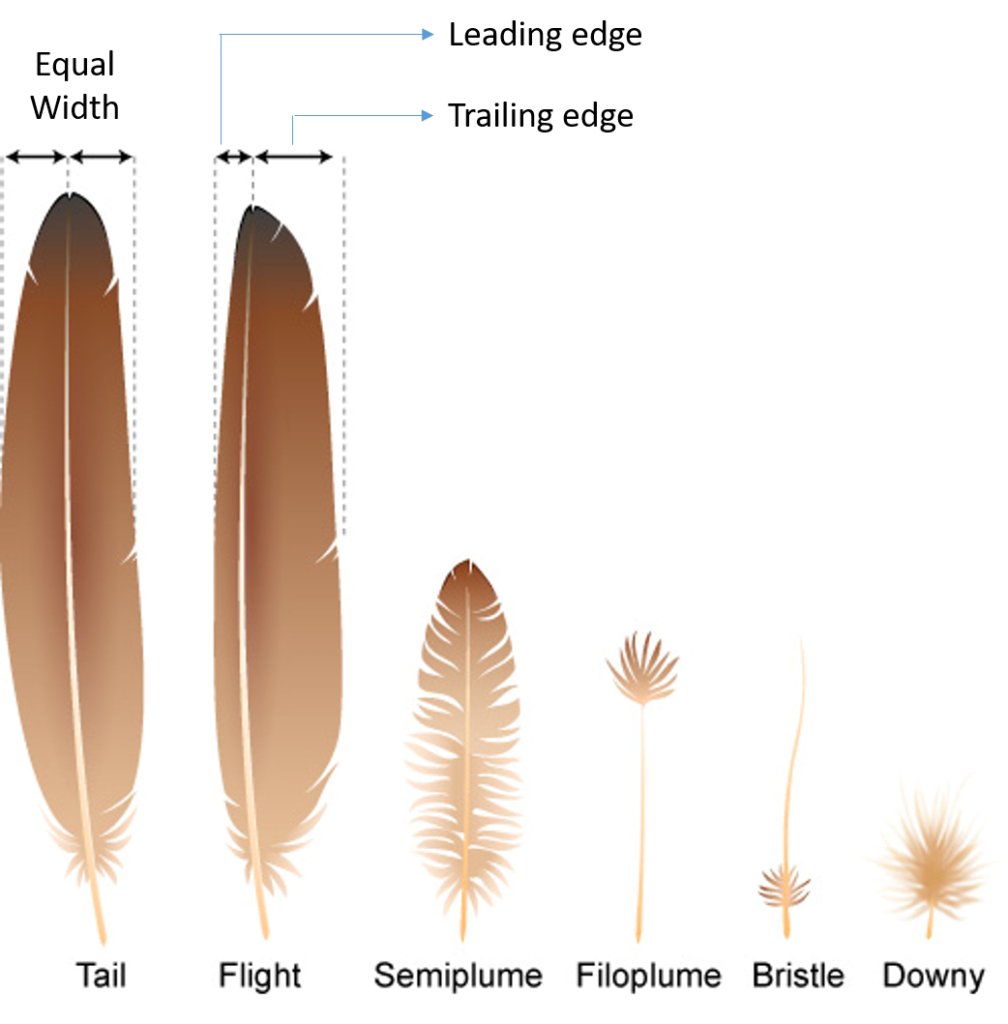
Feathers can be classified basis the rigidity of the central shaft RACHIS. Those with stiff RACHIS are VANED feathers and those with soft RACHIS is down feathers.
VANED Feathers : They are feathers with rigid RACHIS . There are 3 types of VANED feathers
- CONTOUR Feathers : They are feathers that cover the entire body of the bird and give it shape. They constitute the outer plumage. The base of the vane is fluffy while rest of the part is rigid. The BARBICELS are present in birds with flight as they provide the aerofoil capability. The feathers of the flightless birds lack BARBICELS and function as insulators . The feathers covering the body other than Wing and Tail are symmetrical in shape around the shaft. The width of the VANE is same on each side of the RACHIS. The COVERTS are feathers that cover the important parts of the body like Ears, Upper and under wings, Tail etc.The Feathers present on wings are called REMIGES and that present in tail is called RETRICES . Both of them are called the flight feathers. They are asymmetric in shape, that is the VANE is not of same size around the RACHIS. This is because these feathers are exposed to wind. As the wind travels on them at right angles to the shaft , a trailing and leading edge to the feather is created. The part of VANE facing the wind has more pressure on it and there by it is compressed to a thinner size and made stronger by making the WEBBING narrower , while the trailing edge has no such pressure hence it has Wider WEBBING. The trailing edge of a feather on the DISTAL part is NOTCHED as if some part missing . This gives a finger like appearance to the PRIMARY part of the wings. This is very evident in larger birds like Eagles and Storks. This helps reduce Drag and helps in flight.The REMIGES can be further classified as PRIMARIES, SECONDARIES & TERTIARRIES. These feathers are usually dark in colour. This is because they undergo a lot of friction in flight and to make them strong the nature has loaded them with MELANIN that gives them this dark colour and strengthens them
The Flight feathers are explained in detail in http://ogaclicks.com/wordpress/wing-theory/
Summarising the CONTOUR feathers
- Make body aerodynamic for efficient flight
- Protects the body from climates and enemy attacks
- Waterproofs and insulates the body
- It is the canvass on which the colours are painted by nature to help in camouflage and attract mates
- They also grow as Crest , tufts , pennants etc. to be used in display and communication
- SEMI PLUME feathers :They are fluffy with loose BARBICELS and relatively stiff RACHIS. They fill the gap between the CONTOURS and DOWN feathers
- BRISTLES :These are modified feathers with stiff shaft and very few BARBS at the base. There are no BARBICELS. They are found in face near the base of the beak like in Flycatchers , Bulbuls etc. They are called RICTAL BRISTLES and protect the eyes by guiding the prey into the mouth of the bird. They also cover the nostrils in some birds protecting it from dust etc. Here they are called NASAL BRISTLES. They also appear near the eyes in some birds like Hornbills protecting the eyes from damage. They are called EYELASHES.
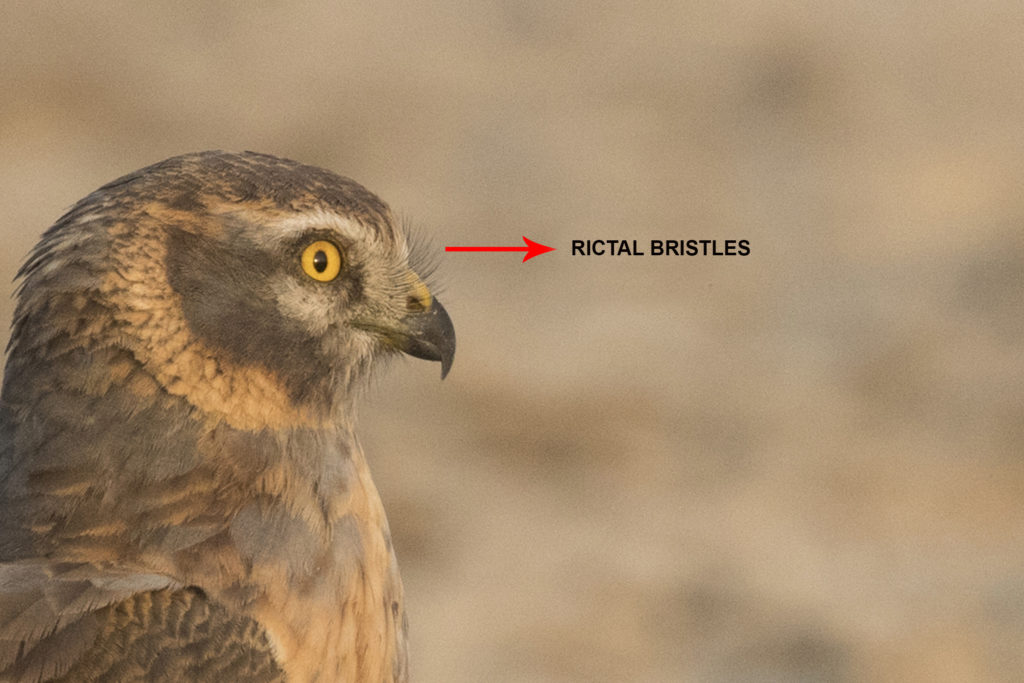
DOWN Feathers
These are round short fluffy feathers without BARBICELS and BARBULES. The BARBS float around freely thereby trapping air and thus making them good insulators. They are found on entire body of the bird under the CONTOUR and SEMI PLUME feathers. They are called the inner feathers as they are generally not visible from outside, They are further classified basis the life stage or part of the bird where they occur
- NATAL DOWN : This covers the body of the chick as it hatches from the egg and remains till it attains immature plumage. Depending on species the birds can have two sets of NATAL DOWN feathers. The first one occurs as soon as the chick comes out of the egg. This is called NEOSSOPTILE DOWN. This occurs in all birds. In some birds like the Skimmer the first set is shed by moulting after few days and a new set replaces them .
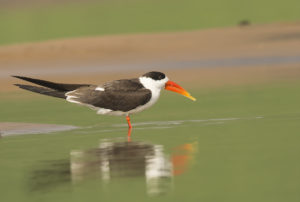 This is called MESOPTILE DOWN. The NATAL DOWN are soft and fluffy and are usually streaked and Speckled. This is to provide the chicks good camouflage from predators. The chicks are born as COLD BLOODED and remain so till they are in the Nestling period. The NATAL DOWN provides insulation to the chick to maintain the body temperature. This supplements the efforts of the Parents in trying to keep their chicks warm by Brooding process ( Delicately sitting on them). It is a wonder to watch the NATAL DOWN feather grow on the back of the chicks for ground /open nest birds as the back is the first part to get exposed to Sun. Similarly for Ducks and water birds the NATAL DOWN is grown in the underside to protect them from water and provide insulation.
This is called MESOPTILE DOWN. The NATAL DOWN are soft and fluffy and are usually streaked and Speckled. This is to provide the chicks good camouflage from predators. The chicks are born as COLD BLOODED and remain so till they are in the Nestling period. The NATAL DOWN provides insulation to the chick to maintain the body temperature. This supplements the efforts of the Parents in trying to keep their chicks warm by Brooding process ( Delicately sitting on them). It is a wonder to watch the NATAL DOWN feather grow on the back of the chicks for ground /open nest birds as the back is the first part to get exposed to Sun. Similarly for Ducks and water birds the NATAL DOWN is grown in the underside to protect them from water and provide insulation.
- ADULT DOWN : This is found in adults during breeding or moulting in winter. As the birds Moult their feathers their
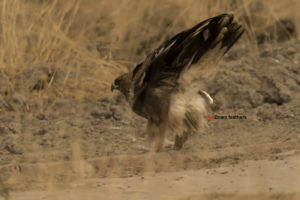 body is exposed to chill of winter and the ADULT DOWN helps in insulating them from the cold.
body is exposed to chill of winter and the ADULT DOWN helps in insulating them from the cold.
- PREEN GLAND DOWN : This grows as a small dense tuft near the PREEN gland. This gland is present near the upper base of the tail. During Preening the bird prods the gland with its beak. this releases the Preening oil . This is transferred onto these PREEN GLAND DOWN . They become matted and help in easy transfer of the oil to the beak so that the bird can apply it all over the body. They also prevent the oil from coating the tail feathers and hamper flight.
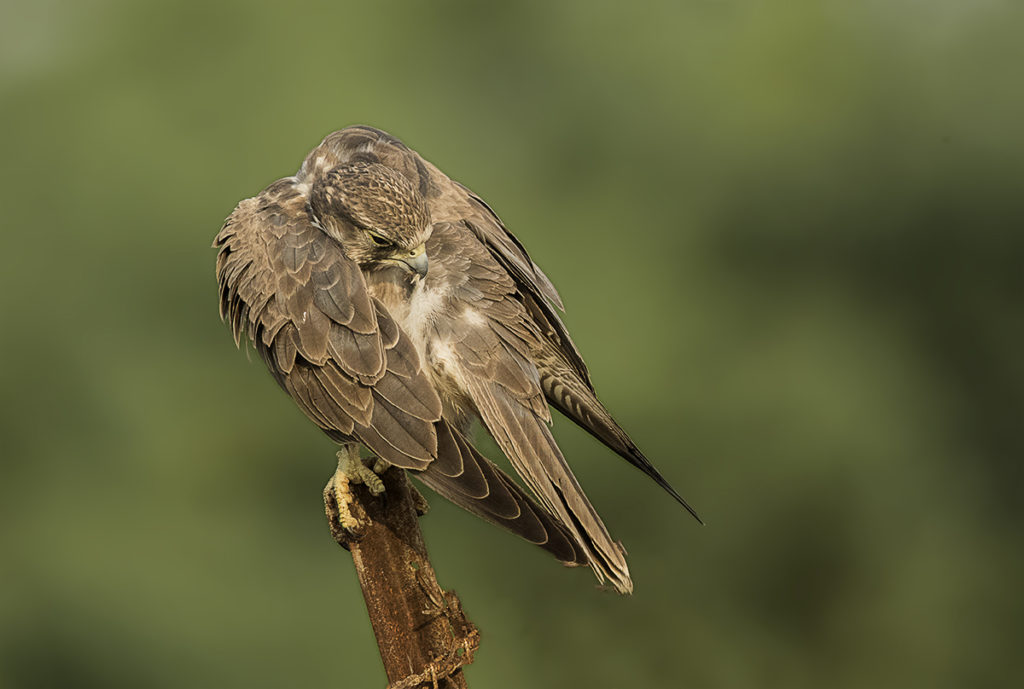
POWDER DOWN : These are special feathers that grow continuously. The end of the BARBS crumble due to aberration and become powder that infiltrates through the feathers and coast the skin. This coating acts like the waterproofing and anti-bacterial agent. This is very common in birds that lack the preening gland like many water birds, Bustards , parrots etc. They usually are present in belly, breast and back
- FILOPLUMES : They are soft with flexible shafts and a few loose BARBS at the base. They are scattered through out the body especially around the CONTOUR feathers. When the CONTOUR feathers are disturbed these DOWN feathers act as pressure and vibration sensors , They make the bird aware that the CONTOUR feathers are out of place and need to be corrected
Thus Birds being the only vertebrates to have Feathers make use of the different type of feathers to fly and insilate themselves. One more of natures amazing engineering feat.
